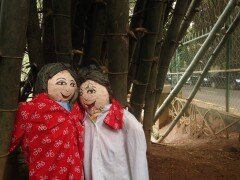
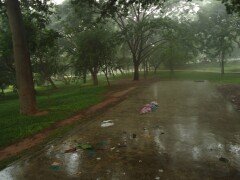
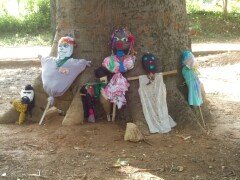
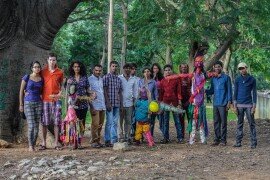
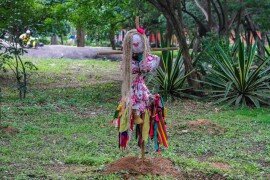
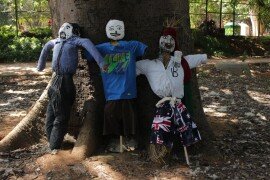
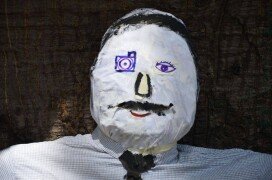
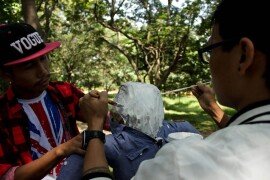
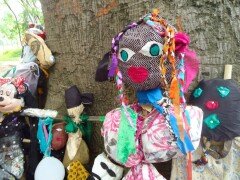
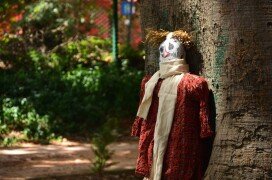
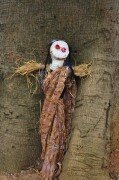
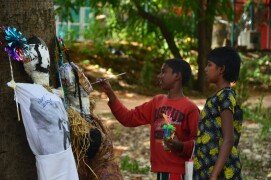
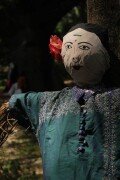
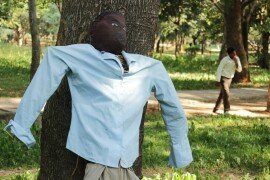
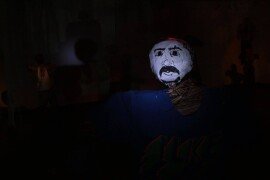
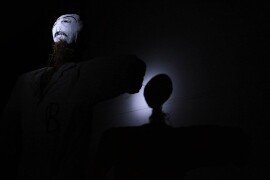
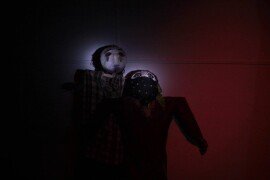
Over the years, we have curated several exhibitions to challenge dominant representations and provoke new ways of seeing and sensing.
Jis tann lãgé, soee jãné | Photo Exhibit on the violence of communalism
*only she whose body is hurt, knows (Gauri Gill, 1984)
Pain has the knowledge, like memory. It does not pass. It stays with a seething presence, unknown to us. The images selected hope to provoke, that which was not buried. These images appear as fermatas, a symbol of musical notation indicating that the note should be prolonged beyond its normal duration.*Featuring works of Gauri Gill, Javed Iqbal, Subrata Biswas & Vivek Singh.
Blueprint of a Park Imaginarium
In response to the privatization of Cubbon Park, we created scarecrows, a series of ‘missing persons’ to mark the absence of those who once inhabited the park. Vendors, Sex workers, Lovers, their eviction reveals the imagination of public space and the publics in a rapidly transforming city. The scarecrows were built in collaboration with vendors, students, lovers, sex workers and others for whom the park is like a home. Their narratives weave together a story of transformation, displacement and resilience in the city. We erected the scarecrows across the park, and in Venkatappa Art Gallery.
The Memory of A Deluge and the Surface of Water
The deluge of September 2014 wrecked havoc in the valley of Kashmir. It besieged the homes of people, drowned the hearts of lovers, stormed the minds of poets, assaulted everything, everyday, while the waters rose. The memory of rising water remains embedded in everyone’s memory in Kashmir, and has become impossible to forget or overcome. The Memory of A Deluge is an exhibition curated by Showkat Katju, Professor at the Srinagar Art College, in collaboration with his students. With object, image and text, the students of the Art College at Srinagar wrote, invented and performed what they felt after the flood in Kashmir. The students travelled, with images of objects that had emerged from the flood waters in Kashmir. These images and memories of what the flood waters left in their wake became anchors for their practice, their education, their future as artists.